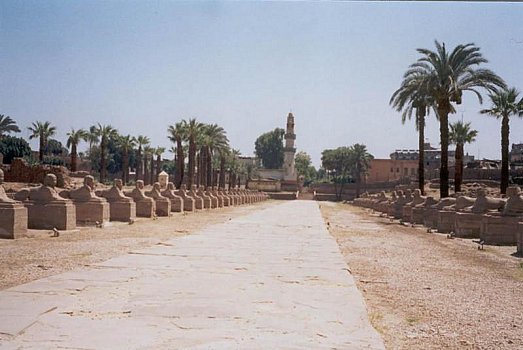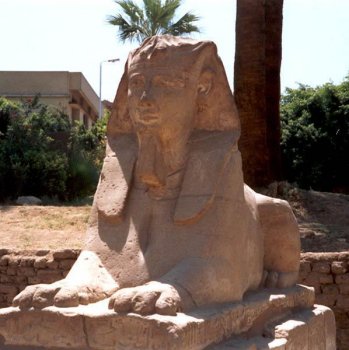
Although during earlier times there was a small temple dedicated to Amun here, Luxor did not become prominent until the 18th Dynasty. The temple we will see was begun by Amenhotep III who reigned from 1390 to 1353 BCE. It was designed and constructed by the famous architect Amenhotep son of Hapu, who was deified during the time of the Ptolemies. Like Karnak, it was dedicated to Amun and used primarily during the yearly Opet Festival. In ancient times, the temple was known as Ipt-Rsyt or the southern shrine — to distinguish it from Karnak.
 |
The approach to the temple is along a this paved avenue. Once stretching over a mile and half (3 kilometers) — the distance between Luxor and Karnak — only two hundred meters of the avenue remains.
 |
In Egyptian art, a sphinx is a creature with the body of a lion and a human head or the head of a ram, falcon, or jackal. Amenhotep III's original design did not include sphinxes. It was at the command of Pharaoh Horemheb that the entire three kilometers of the dromos was lined with criosphinxes — meaning ram's headed — like those seen at Karnak. The criosphinx, most often shown with a figure of pharaoh between its paws, was used to represent Amun protecting Egypt. However, unlike those still seen at Karnak, these sculptures have human heads. They were an addition of Nectanebo I who replaced the originals during the 30th Dynasty. Sphinxes with human heads symbolized wisdom, intelligence, and strength.